Method Suitability: How to validate a pharmaceutical sterility test?
We all know how difficult and laborious it is to validate a sterility test for a rapid microbiological method.
So, we wondered how a microbiological sterility test is validated using the compendial method (also known as the traditional method).
To clarify this, we asked several SuperMicrobiologists to explain how the sterility method suitability testing is performed.
Best RMM
Discover what are the 7 best Pharma RMM
We surveyed the SuperMicrobiologists,
here are the highest-rated RMMs.
What is a compendial sterility test?
Before diving into the subject, let’s briefly review what a microbiological sterility test for pharmaceutical products is.
For a compendial sterility test, there are two methods:
Filtration: Used for filterable products.
The product is filtered, rinsed (important for removing antimicrobial agents), and the membrane is then covered with a liquid culture medium (TSB: Trypticase Soy Broth and FTM: Fluid Thioglycollate Medium).
Direct Inoculation: Used for non-filterable products.
The product to be tested is immersed in a flask containing a liquid culture medium (TSB and FTM).
In both cases, the broths are incubated for a minimum of 14 days, and then checked for turbidity (a sign of contamination).
Sterility tests are described in Chapter 2.6.1 (Sterility Tests) for the European Pharmacopeia (Ph. Eur.), Chapter <71> (Sterility Tests) for the United States Pharmacopeia (USP), and JP 4.06 of the Japanese Pharmacopeia (Sterility Test).
What is a suitability protocol?
When a new sterile pharmaceutical product is developed, before performing routine sterility tests, it is preferable to verify that the method used can correctly recover contaminations (in case there is any of course !).
This allows to check if the product has an impact (often inhibitory) on the growth of microorganisms, which could complicate the detection of potential contaminants. Essentially, the aim is to ensure that there will be no false negatives.
This is why conducting a suitability tests (also known as suitability protocols or applicability protocols) is mandatory.
Here’s how the tests are carried out:
- Prepare 6 Positive Controls (Product + Microorgansim): Inoculate each broth with a pharmacopeial strain (<100 cfu).
- Clostridium, Pseudomonas, and Staphylococcus in thioglycolate (FTM).
- Aspergillus, Bacillus, and Candida in TSB.
For filtration tests, microorganisms are added in the final rinsing solution.
- Prepare Positive Controls without Products.
- Incubate the Broths: Incubate for a maximum of 5 days (not 14 days as in a compendial sterility test).
- Visual Comparison: Compare visually, for each microorganism, the positive control with product and the positive control without product. The growth should be “comparable” – hello subjectivity!
- Further Verification: Replate each positive sample to identify and confirm that it is the inoculated strain and not a contaminant from manipulation (or the product itself). If growths are similar, the product is considered to have no impact on microorganism growth.
- Repeat Protocol: Ideally, this protocol should be repeated on 3 different product lots.
Best QC strains
Pharma : The best QC Strain suppliers
We polled the SuperMicrobiologists.
Here are their favorite QC Strains
What if the suitability test failed?
Depending on the products, the suitability test protocol might not work (different growth between the positive control (medium + germ) and the test (product + medium + germ)).
Fortunately, there are alternative solutions:
For Filtration Sterility Tests:
- Increase the number of rinses: After filtering the product, perform up to 5x 100 ml membrane rinses.
- Use rinse fluids that lift product inhibition: Various types of rinse liquids exist, with different levels of tween or peptones. It’s almost like being a chemist!
For Direct Inoculation Tests:
- Increase the broth volume.
- Inoculate the product in a fluid (type Fluid A), then inoculate Fluid A + product into a broth. However, beware of the broth volume!
There are cases where the non-contaminated product creates turbidity in the broth. In this case, how do we differentiate between a contaminated product and a non-contaminated product?
Fortunately, there are several solutions. After 5 days of incubation, take 1 ml of the broth + incubated product and place it in a new broth (100 ml, 200 ml, or 600 ml). Re-incubate for an additional 4 days. If there is no turbidity, it’s a success!
If there is turbidity, then the only solution is to spread 100 µl of the turbid broth after 14 days of incubation onto a TSA/SDA plate to check for contamination.
Note that for these last two solutions, the sterility test will take longer than the 14 days of the compendial method. 14 days + 4 days for solution 1, and 14 days + TSA/SDA incubation (3 to 5 days) for solution 2.
What are the limitations of the method suitability ?
The method suitability protocol is relatively easy to set up in the microbiology lab. Preparing the strains for artificial contamination of products (<100 cfu) is not too hard, and the number of replicates is also manageable (6 strains on 3 lots).
However, there are a few limitations:
- LOD (Limit of Detection): A sterility test must detect 1 cfu, while the suitability test targets artificial contamination <100 cfu, significantly above the desired LOD.
- Subjectivity: The analyzed product must have “comparable visual contamination” to the positive control. Despite good training, many microbiologists find this subjective and sometimes doubtful.
- Strains Used: The test uses the 6 pharmacopeial strains, with no obligation to use slow growers or endogenous strains commonly found in the production environment.
Method suitability and validation of a Rapid Microbiology Method (RMM)
The question arises:
Can we use the suitability protocol to validate rapid and alternative methods?
This could potentially simplify and speed up the validation process, isn’t it ?
Initially, we would need to prove that the alternative method is not inferior to the compendial method by testing pure culture without products. This PQ1 (Performance Qualification 1) protocol should test LODs below 1.
Once this validation part is done, products could be validated through a “simple” suitability test protocols.
What are your thoughts about it ?
We thank all the SuperMicrobiologists who helped us write this article, especially Sarah Sacoman.

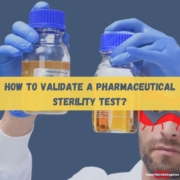


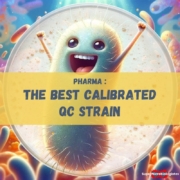
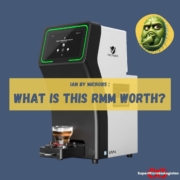
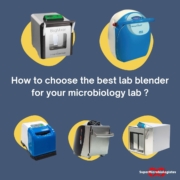
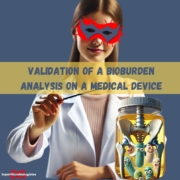
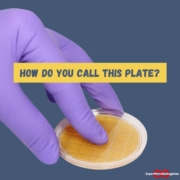








Leave a Reply
Want to join the discussion?Feel free to contribute!